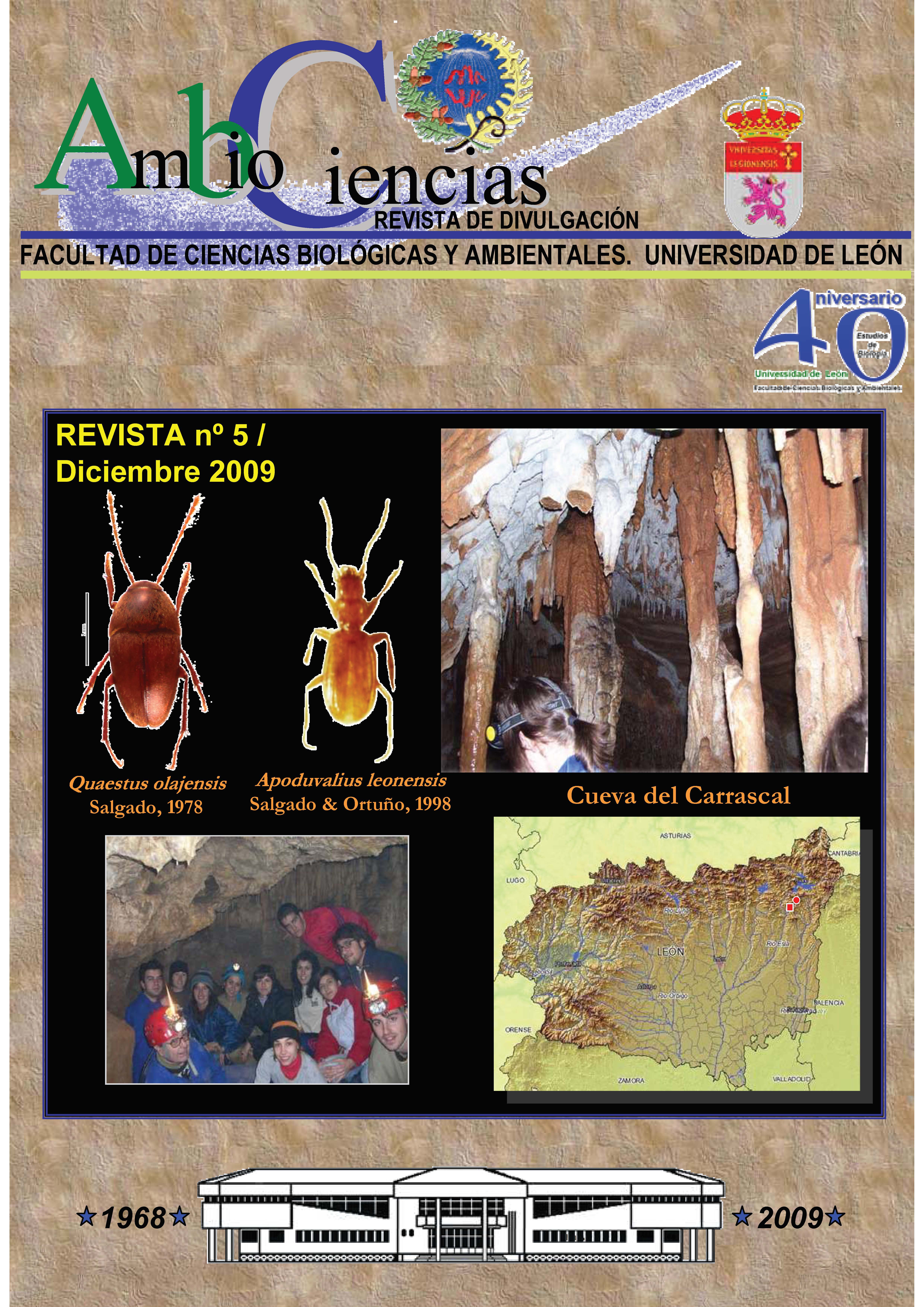Un nuevo conflicto: el oscurecimiento global
DOI:
https://doi.org/10.18002/ambioc.v0i5.4899Palavras-chave:
Ecología. Medio ambiente, Cambio climático, Calentamiento global, Proyecto INDOEX, Contaminación atmosférica,Resumo
El mundo de la ciencia es una esfera de continuo cambio en el que las respuestas a ciertas cuestiones provocan nuevas preguntas sobre acontecimientos recién descubiertos. Cuando parecía que los científicos empezaban a ponerse de acuerdo en las teorías acerca del cambio global que sufre la Tierra, sobre lo que es el calentamiento global y lo que lo provoca, surge un nuevo término, un nuevo impacto del hombre y nuevos interrogantes sobre el futuro del planeta: el oscurecimiento globalDownloads
Referências
Adam, D. 2003. Goodbye Sunshine. The Guardian (18/12/2003).
Bettwy, M. 2007. Did Dust Bust the 2006 Hurricane Season Forecasts? Disponible en www.nasa.gov.
Liepert, B.G. & Kukla, G.J. 1997. Decline in Global Solar Radiation with Increased Horizontal Visibility in Germany between 1964 and 1990. Journal Of Climate 10: 2391-2401.
Liepert, B.G. 2002 Observed reductions of surface solar radiation at Sites in the United States and worldwide from 1961 to 1990. Geophysical Research Letters 29: 1421
Met Office (Meteorological Office). Servicio Meteorológico Nacional del Reino Unido. Disponible en www.metoffice.gov.uk/.
Ohmura, A. & Lang, H. 1989. Secular variation of global radiation in Europe. Currente Problems in Atmospheric Radiation. Deepak Publ. Hampton.
Ohmura, A., Dutton, E.G., Forgan, B., Froehlich, C., Gilgen, H., Hegner, H., Heimo, A., Koenig−Langlo, G., McArthur, B., Mueller, G., Philipona, R., Pinker, R., Whitlock, C., Dehne, K. & Wild, M. 1998. Baseline Surface radiation network (BSRN/WCRP): New precision radiometry for climate research. Bull. American Meteorology Society 79:2115−2136.
Ramanathan, V. 2006. Atmospheric Brown Clouds: Health, Climate and Agriculture Impacts. Pontifical Academy of Sciences Scripta. Vol. 106. Interactions Between Global Change and Human Health. Págs: 47-60.
Ramanathan, V., Crutzen, J.P, Kiehl, J.T & Rosenfeld, D. 2001. Aerosols, Climate, and the Hydrological Cycle. Science Vol 294. Pp.2119-2124.
Roderick, M.L. & Farquhar, G.D. 2002. The Cause of Decreased Pan Evaporation over the Past 50 Years. Science. vol. 298. Págs: 1410-1411. Disponible en www.sciencemag.org.
Roderick, M.L. & Farquhar, G.D. 2004. Changes In Australian Pan Evaporation From 1970 To 2002. Journal Of Climatology. vol. 24 págs: 1077-1090.
Roderick, M.L., Farquhar, D., Berry, S.L. & Noble, I.R. 2001. On the direct effect of clouds and atmospheric particles on the productivity and structure of vegetation Oecologia. Vol.129. Págs:.21–30.
Rotstayn, L.D. & Lohmann, U. 2002. Tropical Rainfall Trends and the Indirect Aerosol Effect. Journal of Climate. Vol.15. Pp. 2103–2116.
Stanhill, G. & Cohen, S. 2001. Global dimming: a review of the evidence for a widespread and significant reduction in global radiation with discussion of its probable causes and possible agricultural consequences. Agricultural and Forest Meteorology. Vol. 107. págs: 255-278.
Stanhill, G. & Cohen, S., 1996. Contemporary Climate Change in the Jordan Valley. Journal of applied Meteorology. Vol. 35. págs: 1051-1058.
Stanhill, G., Cohen, S. & Liepert, B. 2004. Global Dimming comes of Age. Eos. Vol.85, No.38. Págs: 362.
Travis, D. J., Andrew M. & Carleton Ryan G. 2002. Contrails reduce daily temperature range. Nature. Vol. 418. Págs: 601. Disponible en www.nature.com.
VV.AA., 1996. The Indian Ocean Experiment (INDOEX). Universidad de California, San Diego. Publicación 162. Disponibe en www.indoex.ucsd.edu.
IPCC (Grupo Intergubernamental de Expertos sobre el Cambio Climático). Disponible en www.IPCC.
NASA (Nacional Aeronautics and Space Administration) Agencia Estadounidense del Espacio y la Aeronáutica. Disponible en www.nasa.gov.
Downloads
Publicado
Como Citar
Edição
Seção
Licença
Copyright (c) 2009 Mariña Fernández Fernández

Este trabalho está licenciado sob uma licença Creative Commons Attribution-NonCommercial-ShareAlike 4.0 International License.
Los autores que publican en esta revista están de acuerdo con los siguientes términos:
- Los autores ceden de forma no exclusiva los derechos de explotación (reproducción, distribución, comunicación pública, transformación) a la Universidad de León, por lo que pueden establecer, por separado, acuerdos adicionales para la distribución no exclusiva de la versión de la obra publicada en la revista (por ejemplo, alojarlo en un repositorio institucional o publicarlo en un libro), con un reconocimiento de su publicación inicial en esta revista.
- Este trabajo se encuentra bajo la Creative Commons Attribution-NonCommercial-ShareAlike 4.0 International License. Puede consultarse desde aquí la versión informativa y el texto legal de la licencia.
- Se permite y se anima a los autores a difundir electrónicamente las versiones pre-print (versión antes de ser evaluada) y/o post-print (versión evaluada y aceptada para su publicación) de sus obras antes de su publicación, ya que favorece su circulación y difusión más temprana y con ello un posible aumento en su citación y alcance entre la comunidad académica.







